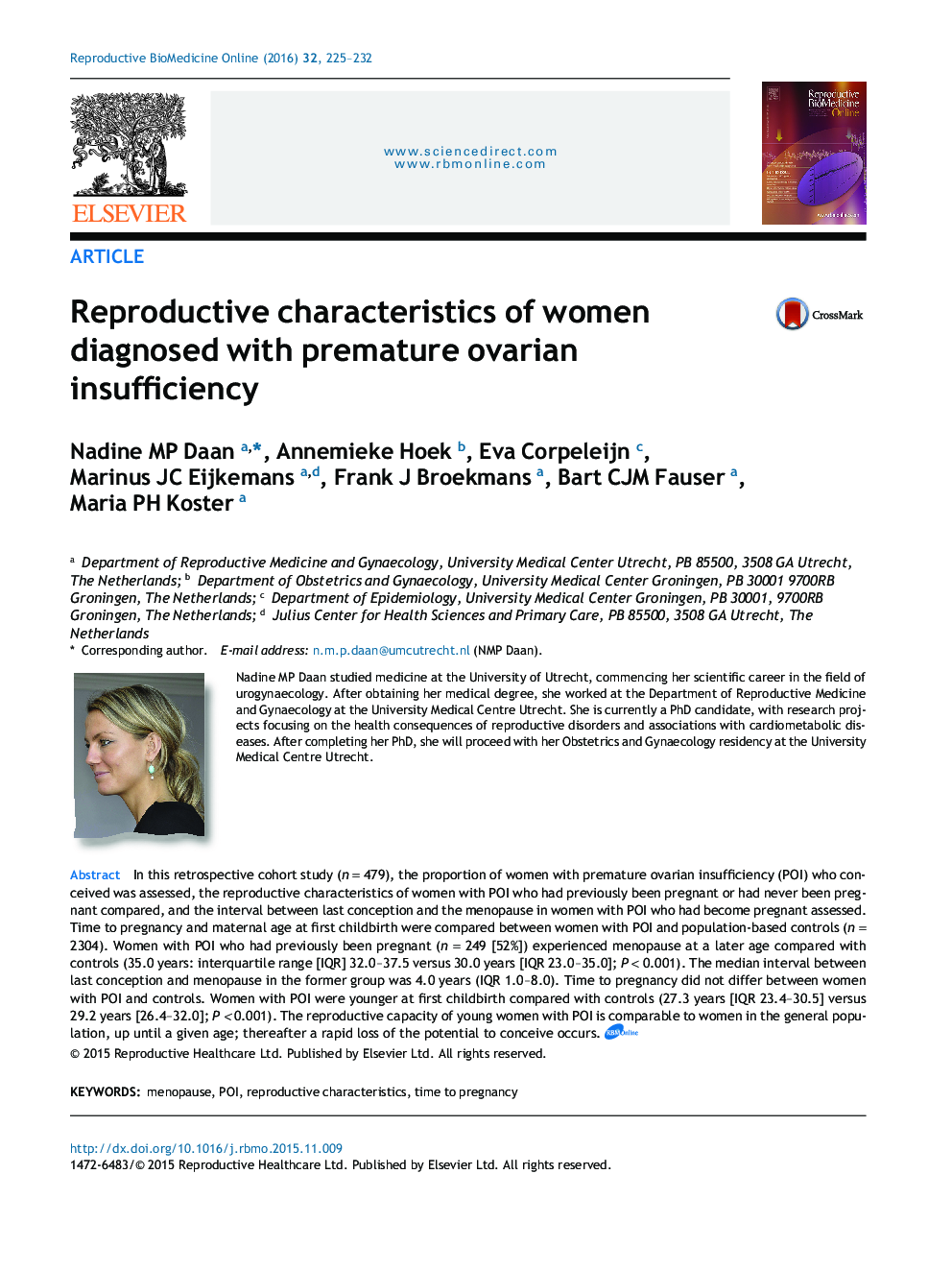| Article ID | Journal | Published Year | Pages | File Type |
|---|---|---|---|---|
| 6188639 | Reproductive BioMedicine Online | 2016 | 8 Pages |
In this retrospective cohort study (n = 479), the proportion of women with premature ovarian insufficiency (POI) who conceived was assessed, the reproductive characteristics of women with POI who had previously been pregnant or had never been pregnant compared, and the interval between last conception and the menopause in women with POI who had become pregnant assessed. Time to pregnancy and maternal age at first childbirth were compared between women with POI and population-based controls (n = 2304). Women with POI who had previously been pregnant (n = 249 [52%]) experienced menopause at a later age compared with controls (35.0 years: interquartile range [IQR] 32.0-37.5 versus 30.0 years [IQR 23.0-35.0]; P < 0.001). The median interval between last conception and menopause in the former group was 4.0 years (IQR 1.0-8.0). Time to pregnancy did not differ between women with POI and controls. Women with POI were younger at first childbirth compared with controls (27.3 years [IQR 23.4-30.5] versus 29.2 years [26.4-32.0]; P < 0.001). The reproductive capacity of young women with POI is comparable to women in the general population, up until a given age; thereafter a rapid loss of the potential to conceive occurs.
